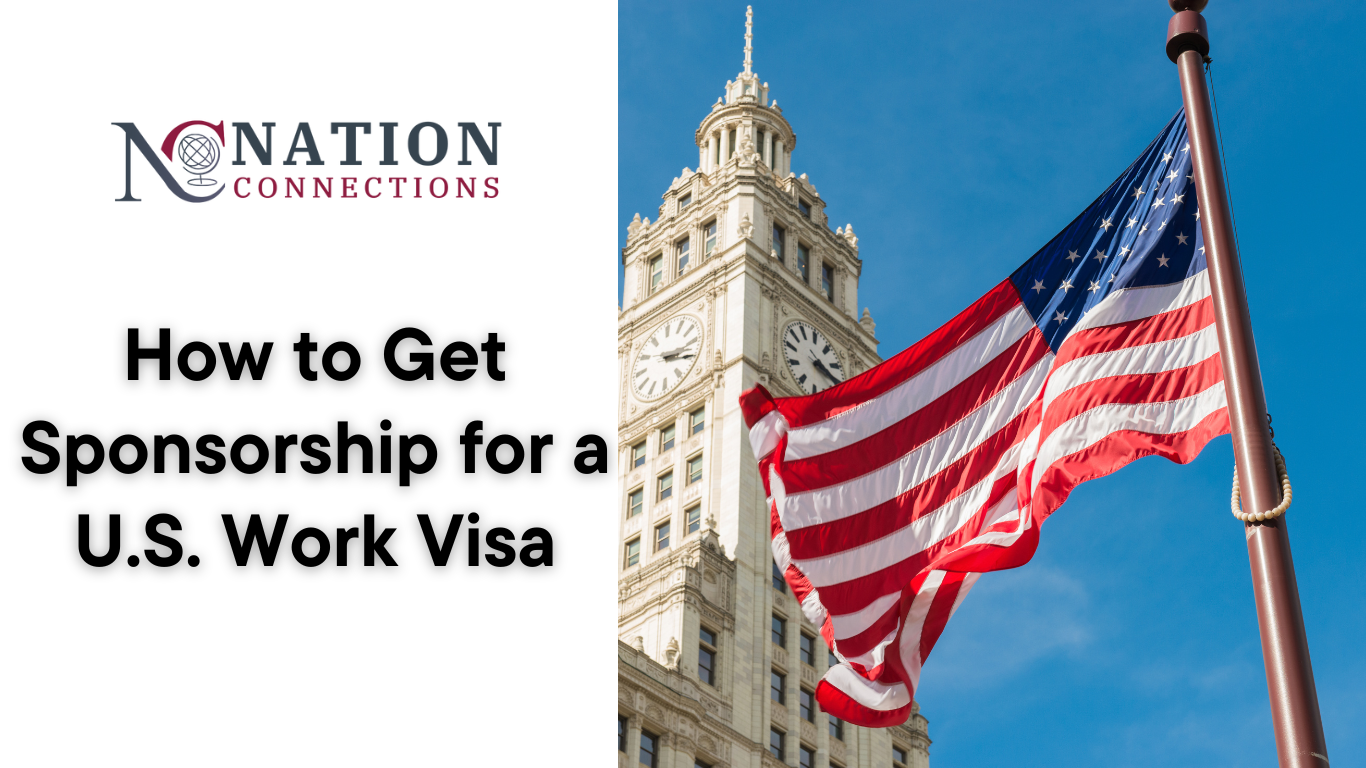Introduction
Securing sponsorship for a U.S. work visa can be challenging, but with the right approach, it’s entirely possible. Whether you’re looking for an H-1B, L-1, O-1, or another visa type, understanding how to get an employer to sponsor you is crucial. This blog will walk you through the steps, strategies, and best practices to increase your chances of obtaining sponsorship for a U.S. work visa.
Understanding U.S. Work Visa Sponsorship
Work visa sponsorship means that a U.S. employer is willing to hire a foreign worker and is ready to handle the legal and financial responsibilities of securing the visa. This includes filing paperwork with the U.S. Citizenship and Immigration Services (USCIS) and sometimes obtaining a Labor Condition Application (LCA) from the Department of Labor.
Types of U.S. Work Visas That Require Sponsorship
Here are the most common work visas that require employer sponsorship:
- H-1B Visa – For highly skilled professionals in specialized fields such as IT, engineering, and finance.
- L-1 Visa – For employees transferring within the same company from a foreign office to a U.S. office.
- O-1 Visa – For individuals with extraordinary abilities in science, arts, education, or business.
- TN Visa – For Canadian and Mexican professionals under the USMCA agreement.
- E-2 Visa – For investors and entrepreneurs who start a business in the U.S.
Step-by-Step Guide to Getting Sponsorship for a U.S. Work Visa
1. Identify the Right Visa Type
Before applying for sponsorship, determine which visa category suits your qualifications, profession, and long-term career goals.
2. Research Companies That Sponsor Work Visas
Some companies are more likely to sponsor foreign workers. Websites like myvisajobs.com, H1BGrader, and LinkedIn can help you find employers that have sponsored visas in the past.
3. Build a Strong Resume and Cover Letter
Your resume should highlight:
- Specialized skills that are in demand.
- Certifications and degrees relevant to your industry.
- Previous international experience.
Your cover letter should directly address why hiring you benefits the employer, especially considering the cost and effort of visa sponsorship.
4. Network with Professionals in Your Field
- Attend industry conferences and job fairs.
- Connect with professionals and recruiters on LinkedIn.
- Join online communities and forums where visa-sponsored job seekers share opportunities.
5. Apply for Jobs with Sponsorship Opportunities
- Look for job listings that mention “visa sponsorship available.”
- Apply through employer websites, LinkedIn, and specialized job boards.
- Consider international recruitment agencies that help foreign professionals secure jobs in the U.S.
6. Prepare for Interviews with Sponsorship in Mind
During interviews, be prepared to discuss:
- Why you are the best fit for the role.
- Your eligibility for the visa you’re applying for.
- Your willingness to commit to the company long-term.
7. Work with Immigration Lawyers or Consultants
Many professionals seek legal assistance to ensure a smooth sponsorship process. A lawyer can help:
- Determine the best visa option.
- Ensure all paperwork is correctly filed.
- Assist employers who may be unfamiliar with the sponsorship process.
Industries That Frequently Sponsor Work Visas
Certain industries have a high demand for international talent and frequently sponsor work visas. These include:
- Technology – Software engineering, data science, cybersecurity.
- Healthcare – Physicians, nurses, medical researchers.
- Engineering – Civil, mechanical, and electrical engineers.
- Finance – Investment banking, risk management, and fintech.
- Academia – University professors, researchers, and scientists.
Alternative Paths to a U.S. Work Visa
If employer sponsorship proves difficult, consider these alternatives:
- Apply for the Diversity Visa Lottery (if eligible).
- Seek employment in U.S.-based multinational companies and request a transfer.
- Explore self-sponsored visas like the EB-1 (Extraordinary Ability) or EB-2 NIW (National Interest Waiver).
Conclusion
Getting sponsorship for a U.S. work visa requires strategic job searching, strong networking, and an understanding of visa requirements. By targeting the right industries, building a compelling case for your employment, and leveraging professional connections, you can increase your chances of finding a U.S. employer willing to sponsor your visa.
Need more help? Consider working with an immigration lawyer or recruiter who specializes in visa sponsorship jobs. Good luck on your journey to working in the U.S.!
Would you like assistance with resume optimization or specific visa application tips? Let me know! 😊




